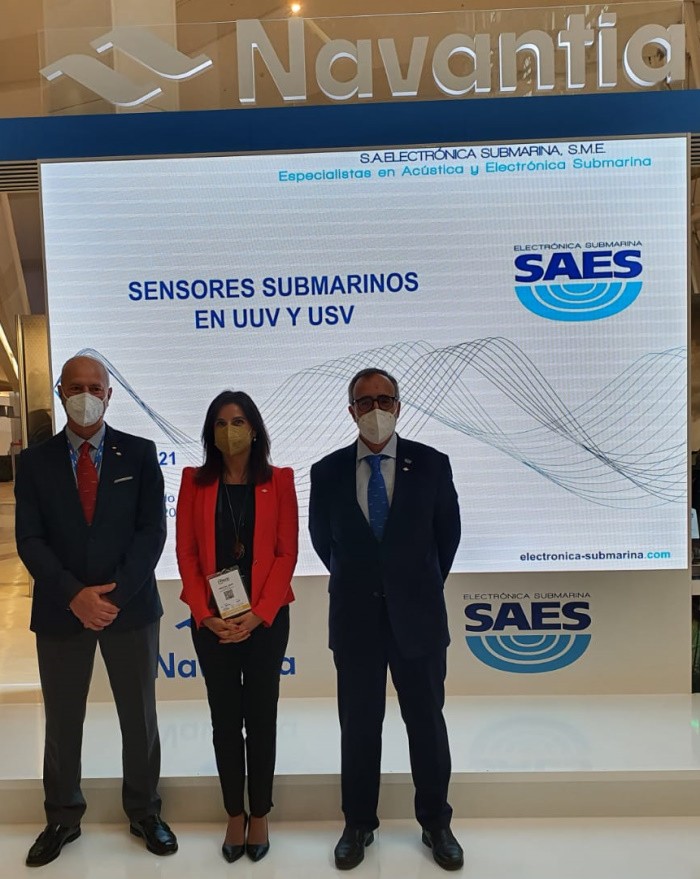SAES presents its ASW solutions for RPAS and underwater sensors for USV and UUV at the Spanish drone fair.
For UAVs, SAES, which participates in UNVEX 2021 as a co-exhibitor with Navantia, supplies state-of-the-art ASW solutions based on sonobuoys, which enable RPAS as an advanced station for submarine early warning, as well as high-technology underwater sensors and improved signal processing for USV (Unmanned Surface Vehicle) and UUV (Unmanned Underwater Vehicles).

Illustration 1: Cristina Abad Salinas, General Director of SAES (center), together with Adolfo Hernández Solano, Commercial & Business Development Director (on the left), and Eduardo Ruiz Pérez, Civil, Security & UxVs Sales and Business Develooment Manager (on the right).
In this sense, SAES has shown two presentations at the Navantia-SAES stand. The first one about its ASW solutions for RPAS, which took place on July 7 at 1:00 p.m., by Ignacio Gutiérrez, Head of ASW Line of Business, entitled “ROASW: ASW System for operation with RPAS”.
On March 2014 SAES attended the III Congress on unmanned vehicles UNVEX’2014 in Madrid. On that occasion, the conference by Ignacio Gutiérrez, entitled “Industry Solutions II”, already indicated that the new ASW missions were going to require the use of UAVs as a distant and elevated platform without a dedicated operator.
In the second presentation, entitled “Submarine sensors in UUV and USV”, on July 8 at 11 am, Eduardo Ruiz Pérez, Sales and Business Development Manager for Civil, Security & UxVs, explained that the sensors will have a great relevance in the evolution of aspects such as autonomy of the UUV, where a technological leap is foreseen, of “strategic importance” for defence and industry.
In the field of unmanned underwater vehicles, SAES presented in December 2020, together with Navantia, the ACASUB proposal, within the Ports 4.0 initiative, to provide submarine capabilities to the USV Vendaval from Navantia, in service at the port of Ceuta. Apart from incorporating its real-time monitoring, the estimation of the noise source, object detection and the sending of acoustic signals to divers in the protection area are under development.
SAES also collaborated in the Ocean Master project to develop a vehicle with a dual function, underwater and surface, adaptable to different platforms. In this initiative, which ended a year ago, SAES worked on the payload, integrating a side scan sonar, acoustic communications and its sonar for the detection of divers.
